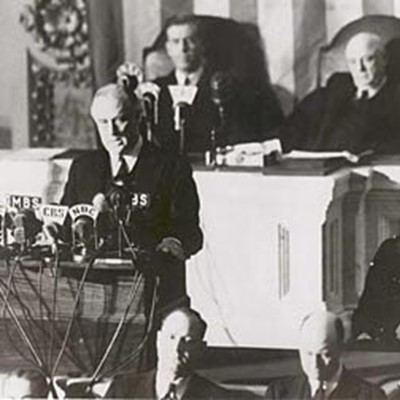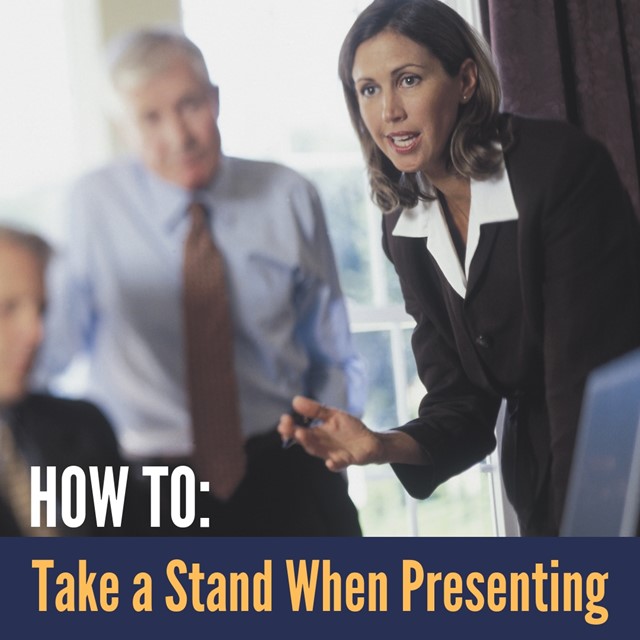
"Be sure to put your feet in the right place, then stand firm."
– Abraham Lincoln
No doubt, there’ll come a time when you’ll have to decide what you think about something, then advocate for it.
We’re not talking about that, though we imagine Abraham Lincoln was.
We’re talking about something more, ahem, pedestrian. Your feet. And where you put them when you’re presenting.
Because it turns out it’s hard to make an audience think you stand for something when you don’t take a literal stand--when you don't stop meandering and shuffling to plant yourself solidly. (Watch for it in other speakers and see if you don't agree.)
Standing well is also one of those small changes you can make to your public speaking that delivers larger-than-you-might-think results.
When your feet are well-spaced, you appear more confident and in control. You move more easily and naturally. And you present fewer distractions for your audience.
Here’s how we recommend you approach setting up your stance:
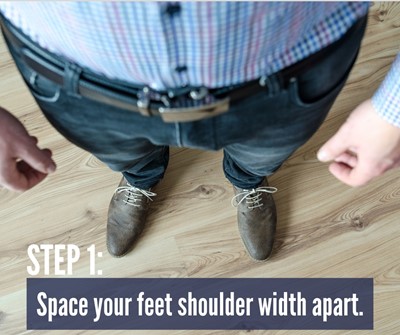
Step 1: Space your feet about shoulder width apart.
When feet are too close together or too far apart, you won’t be able to control and move your upper body effectively. The goal with foot placement is to create a balanced, solid foundation.
If you feel awkward or you’re concerned you might sway side to side, slide one foot slightly back. You don’t have to toe an imaginary line as long as the rest of your body is squared up to the audience.
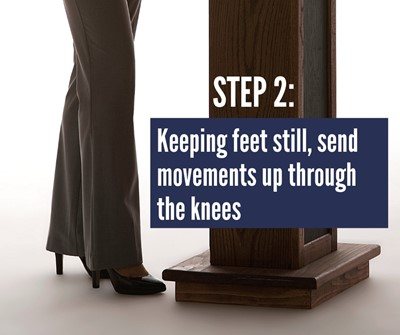
Step 2: Keep feet still and send movements up through the knees and into the upper body.
Send the energy where the audience can see it. Too often, we see presenters keep their upper bodies stiff and move their feet restlessly in a public speaker's version of Riverdance.
Go for the reverse of that. With feet solidly in place, knees bent, you can animate the torso and shoulders, moving athletically and naturally to support your message.
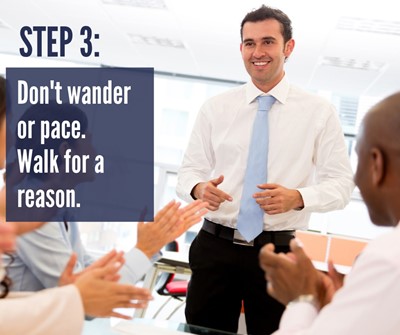
Step 3: If you do want to move your feet, move for a reason.
Taking a stand doesn’t mean you have to remain glued in place. You can walk—just avoid pacing side to side, nonstop, for no reason.
And without leaving your spot, you can:
- Rise up on the balls of your feet for emphasis
- Bend your knees and crouch down, to do the same
- Turn your upper body to address one side of the room, then turn to the other
- Lean forward to connect or build intensity
- Lean back to shrug and ask a question
Here are a number of things you should AVOID doing:
- Do not cross one foot over the other. This is not stable position.
- Do not tap your foot and make noise. It’s distracting!
- Do not shuffle around side to side or in a small circle. Also distracting.
- Do not cock one foot up on the lectern’s base. Unstable and potentially noisy.
- Do not kick your foot back and rest you toe on the floor. Keeps you from using body language.
- Do not swing your foot around absent-mindedly. See all of the reasons above.
It works!
In one of our recent Executive Seminars, a quite tall and brilliant young man insisted on standing with his feet close together, side by side. Every time he spoke, he wriggled and twisted nonstop. He was undermining his message, because he seemed so ill at ease delivering it.
Then we insisted he place his feet shoulder width apart (and threatened to Velcro them to the carpet if he didn’t keep them there). His classmates noticed immediately that his body language changed. That broader base gave his stage presence the solidity it had been missing, and was a perfect example of how a small change can make a significant difference.


